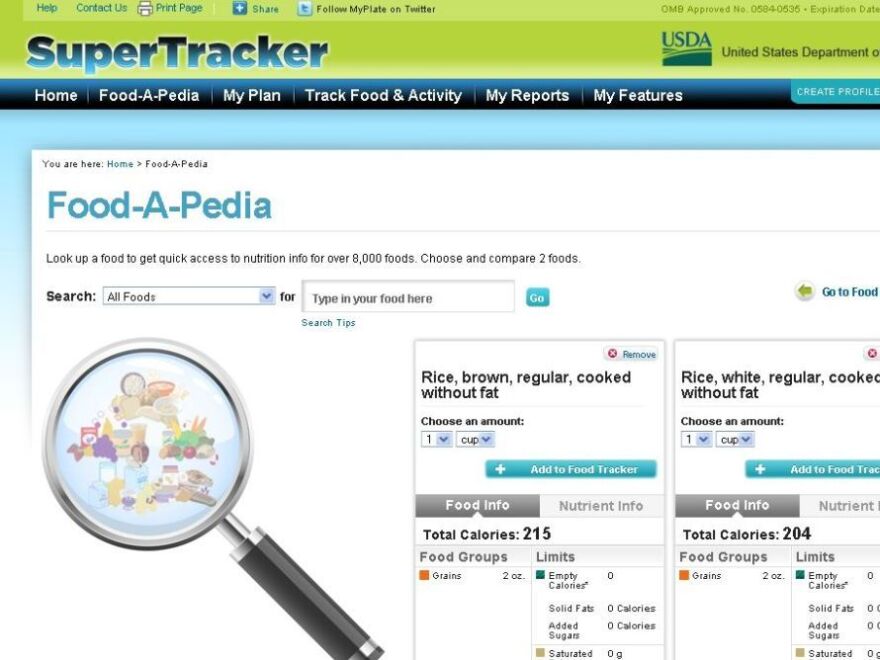January is a giddy time for weight-loss companies, which usually rake in profits as New Year's resolutions shuttle earnest dieters to their doors. Now, the U.S. Department of Agriculture would like to get in on the action, too. Not the money, mind you. The feds want us to use their new online food-and-exercise tracker, SuperTracker.
Tracking is a concept known all too well to anybody who has ever been on a diet. Write down what you eat, and you'll eat less, or at least eat healthier, the thinking goes. Research has shown that tracking does help people lose pounds and keep them off.
And in the past few years weight-loss companies like WeightWatchers and Jenny Craig have rolled out interactive trackers and apps that make this tedious task a bit simpler. But you've got to join, and pay, to use those trackers. The government is offering up SuperTracker for free.
SuperTracker launched on Dec. 22, when most of us were not regulating what we ate at all. But it has already logged 9 million visits. It offers three main features: a database of nutritional information for food; a diary for tracking daily consumption; and a physical activity tracker.
That's not so different than many free food trackers already online. But SuperTracker's big bonus may be the Food-A-Pedia, with nutritional information on more than 8,000 foods. The data comes not from manufacturers, but from chemical analyses by the USDA's Agriculture Research Service.
"It's the gold standard of food composition," says Robert Post, deputy director of the USDA's Center for Nutrition Policy and Promotion, which built SuperTracker.
The database leaves something to be desired, though. The Salt tried looking up random foods, only to find the first four — Pop-Tarts, HoHos, farro, and peppermint ice cream — weren't there. (By comparison, the WeightWatchers tracked Pop-Tarts and peppermint ice cream, but failed on HoHos and farro.) Simpler requests, like "brown rice," deliver nine different options on SuperTracker. And the nutrient information for each provides way more info than a package label, including Omega 3-EPA and Omega 3-DHA.
USDA officials designed the SuperTracker based on comments from users of its previous interactive tool, MyPyramid.gov. The pyramid was retired last June and replaced with , after the USDA unveiled new dietary guidelines for the nation. The SuperTracker's the interactive tool.

Even though MyPyramid logged more visits than any other dot-gov site, it wasn't user-friendly, Post admits. Users told the USDA that they didn't want to be forced to register to use the site. They wanted a clean, simple way to find the information they wanted. And they wanted to be able to compare two foods just for calorie content, or drill down and get detailed nutritional information.
The feds must have listened to the focus groups, because SuperTracker is pretty much a breeze to use. Users do have to register if they want to track their eating and activity over time, which seems the whole point of a food diary. But registration also opens the door to customized advice based on age, weight, and gender, as well as the ability to share progress on Facebook or Twitter.
Post swears that the government is not interested in what you're eating, but a privacy-conscious user of the site might want to use a nom de Web when registering.
Mobile apps are in the works, Post says, and will be built based on user feedback from the Web-based tracker.
Copyright 2020 NPR. To see more, visit https://www.npr.org.



